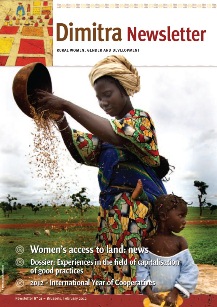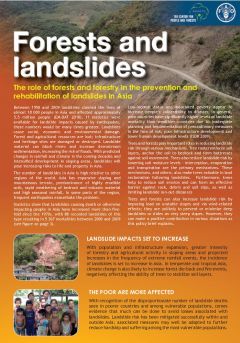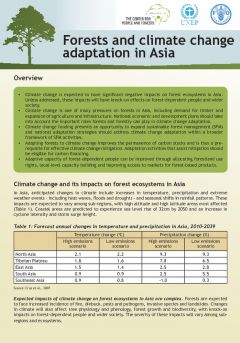Focal point
Location
The Food and Agriculture Organization of the United Nations leads international efforts to defeat hunger. Serving both developed and developing countries, FAO acts as a neutral forum where all nations meet as equals to negotiate agreements and debate policy. FAO is also a source of knowledge and information. We help developing countries and countries in transition modernize and improve agriculture, forestry and fisheries practices and ensure good nutrition for all. Since our founding in 1945, we have focused special attention on developing rural areas, home to 70 percent of the world's poor and hungry people.
Members:
Resources
Displaying 2501 - 2505 of 5074References to women's land rights in international instruments and references to gender in the draft Voluntary Guidelines
This page is meant to provide a quick overview of major reference to women's land rights in existing international instruments, as well as paragraphs related to women - or more broadly gender - in the First Draft of the Voluntary Guidelines on the Responsible Governance of Tenure of Land, Fisheries and Forests in the context of National Food Security (VGs). The VGs are still under-negotiations under the auspices of the Committee of World Food Security, and are therefore still subject to change.
From Finding Common Ground to Making it Happen
Voluntary Guidelines of Tenure Brochure
Women's access to land news in the FAO Dimitra Newsletter - February 2012
I invite you to read the last Dimitra newsletter from FAO, which includes several pages on women's land rights, with case studies from Niger, Mali and Madagascar. Below you can find an excerpt from the forward by Marcela Villarreal (Director, Gender, Equity and Rural Employment Division, FAO) and links to the three case studies.
Forests and Landslides: The Role of Forests and Forestry in the Prevention and Rehabilitation of Landslides in Asia
Trees and forests play important roles in reducing landslide risk through various mechanisms. Tree roots reinforce soil layers, anchor the soil to bedrock and form buttresses against soil movement. Trees also reduce landslide risk by lowering soil moisture levels – interception, evaporation and transpiration are the primary mechanisms. These mechanisms, and others, also make trees valuable in land reclamation following landslides.
Forests and Climate Change Adaption in Asia
This brief, produced jointly by FAO, UNEP and RECOFTC, outlines the ways in which forests contribute to climate change adaptation in the Asian region. It details current climate changes impacting forest ecosystems in Asia; key components of climate change adaptation and sustainable forest management; the current status of climate change adaptation and forests in Asia; and the way ahead.
Overview:










